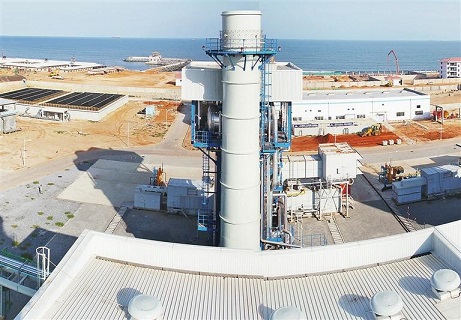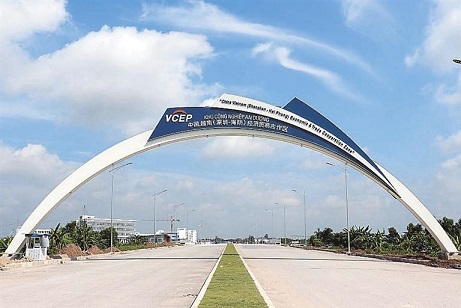Shenzhen
 2024/1/30
2024/1/30
 source: Shenzhen Daily
source: Shenzhen Daily
 Print
Print


Editor’s Note:
Over the past decade, Shenzhen has enthusiastically engaged in deepening exchanges and collaborations in areas such as infrastructure connectivity, trade facilitation, financial integration, and people-to-people bonds with Belt and Road countries. Shenzhen Daily is presenting a series of reports on the city’s active role in boosting the high-quality development of the Belt and Road Initiative.
Chen Siqi
vankochensq@163.com
DURING the recent Uzbekistan-China Investment Forum in Shenzhen, Uzbekistan’s President Shavkat Mirziyoyev made a speech that encouraged Shenzhen enterprises to invest more in his country.
As Mirziyoyev undertook his three-day tour of China, he dedicated a significant portion of his itinerary to Shenzhen, which included a visit to BYD’s headquarters in Pingshan District. During this visit, he presided over the delivery ceremony of BYD’s 10,000th new energy vehicle (NEV) in Uzbekistan, marking a landmark event for BYD’s joint venture with Uzavtosanoat JSC, which established a car plant in the Uzbek province of Jizzax last year.
Beyond BYD, Shenzhen enterprises including Huawei and ZTE have also firmly established their presence in Uzbekistan.
Over the past decade, Shenzhen enterprises have significantly fortified their foothold in Belt and Road Initiative (BRI) partner countries by focusing, in particular, on ventures in areas such as infrastructure, NEVs, digital economy, and green technology. This concerted effort has created job opportunities and propelled economic development in these regions.
By the end of November 2023, Shenzhen enterprises had established 1,189 companies and institutions in BRI countries, with a cumulative agreed investment of US$12.5 billion. Moreover, Shenzhen enterprises had secured new contracts worth US$171.79 billion for projects in these countries by the end of November 2023.
Plant in Ghana
Shenzhen Energy Group is one of a number of Shenzhen enterprises that are making concrete efforts to support the BRI.
By establishing a thermal power station in Ghana that uses natural gas, the company has made significant contributions to the country’s energy sector. This project effectively addressed power shortages in the country when it began operations in 2012. The subsequent expansion of the project, marked by the activation of the second set of generators in June 2017, generated nearly 25% of Ghana’s energy supply and substantially reduced carbon dioxide emissions by 700,000 tons annually.
By the end of 2022, the generators had achieved a net profit of 1.75 billion yuan (US$243 million) and constituted nearly 20% of Ghana’s energy supply, benefiting over 2 million local residents and directly creating 300 jobs for locals.
During a recent visit by a foreign delegation to Shenzhen, Ghana’s Ambassador to China, Winfred Nii Okai Hammond, lauded Shenzhen Energy Group’s significant contributions to Ghana’s energy sector and highlighted it as an exemplary company among Shenzhen enterprises involved in BRI projects.
Diverse
contributions
Numerous BRI countries have shown interest in Shenzhen’s high-tech industries, including advanced manufacturing, artificial intelligence, big data, NEVs, and smart city technologies.
In December 2023, a battery energy storage facility jointly constructed by Huawei went into operation in Saudi Arabia’s Red Sea Project, a new tourism hub. This facility, one of the world’s largest, has provided green electricity to 1 million local residents.
Huawei has been actively involved in providing high-quality communication infrastructure and digital solutions for education and health care in BRI countries. The company had deployed smart city solutions in more than 200 cities across over 40 countries and regions as of June 2022.
Similarly, ZTE has been actively promoting the application of 5G technologies in BRI countries. With operations spanning 110 countries and employing more than 10,000 overseas staff, ZTE has played a pivotal role in the technological proliferation of 5G in many parts of the world.
Industrial park
Located in Haiphong, Vietnam, the country’s third-largest city, the China-Vietnam (Shenzhen-Haiphong) Economic and Trade Cooperation Park (VCEP) is the first overseas economic and trade cooperation zone established by Shenzhen. Construction for the project commenced in 2017. The park covers an total area of 207 hectares, and factories and offices covering 125,000 square meters have been built to date.
The park presently hosts 37 companies specializing in electronics and mechatronics, with 20 of them from Shenzhen. This park has so far generated a total output of over US$3.8 billion and created 15,000 jobs.
This park has become a demonstration project for Chinese enterprises expanding their businesses overseas, especially in Vietnam, and serves as a model BRI project.





